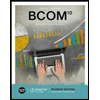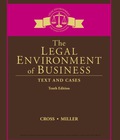
Informal Rulemaking. Assume that the Food and Drug Administration (FDA), using proper procedures, adopts a rule describing its future investigations. This new rule covers all future circumstances in which the FDA wants to regulate food additives. Under the new rule, the FDA is not to regulate food additives without giving food companies an opportunity to cross-examine witnesses. Later, the FDA wants to regulate methylisocyanate, a food additive. The FDA undertakes an informal rulemaking procedure, without cross-examination, and regulates methylisocyanate. Producers protest, saying that the FDA promised them the opportunity for cross-examination. The FDA responds that the Administrative Procedure Act does not require such cross-examination and that it is free to withdraw the promise made in its new rule. If the producers challenge the FDA in court, on what basis would the court rule in their favor? Explain. (See The Administrative Process.)
Want to see the full answer?
Check out a sample textbook solution
Chapter 23 Solutions
EBK THE LEGAL ENVIRONMENT OF BUSINESS:
- Gestures and movement are examples of which type of nonverbals? Group of answer choices appearance proxemics vocalics kinesicsarrow_forwardProblem 1.1 Cyber security is a very costly dimension of doing business for many retailers and their customers who use credit and debit cards. A recent data breach of U.S.-based Home Depot involved some 56 million cardholders. Just to investigate and cover the immediate direct costs of this identity theft amounted to an estimated $62,000,000, of which $27,000,000 was recovered by insurance company payments. This does not include indirect costs, such as, lost future business, costs to banks, and cost to replace cards. If a cyber security vendor had proposed 8 years before the breach that a $10,000,000 investment in a malware detection system could guard the company's computer and payment systems from such a breach, would it have kept up with the rate of inflation estimated at 4% per year?arrow_forwardExplain in detail the principle of Compounding of interest and why is it so important in Finance.arrow_forward
- Hello, please make an excel of this. Show all the cells thanks. some replied with a paper answer thank you I just cant understand the way the did it. Can someone show me all screenshots o fthis problem solved and in excel? i need to solver too for the constraints. I seen multiple times across other platforms that one of the chairs optimal solutions is 0 but they both have to be higher than 1 The Heinrich Company manufactures two types of plastic hangerracks (Foldaways and Straightaways) especially suited for mountingnear clothes dryers. Because permanent press clothing must be hungon hangers immediately after removal from the dryer, these items havebeen especially popular. However, there is some concern that thePreppie movement (popularized by its own handbook) will extinguishpolyester clothing; Heinrich is terribly interested in doing the best withthe resources it has while its products are still in demand. The firsttype of hanger rack, the Foldaway, requires 10 ounces of…arrow_forwardIs crowdfunding a good source for starting a financial planning company? Discuss why or why not it would be right for this.arrow_forwardI need answer typing clear urjent no chatgpt used pls i will give 5 Upvotes.arrow_forward
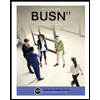 BUSN 11 Introduction to Business Student EditionBusinessISBN:9781337407137Author:KellyPublisher:Cengage Learning
BUSN 11 Introduction to Business Student EditionBusinessISBN:9781337407137Author:KellyPublisher:Cengage Learning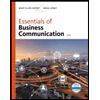 Essentials of Business Communication (MindTap Cou...BusinessISBN:9781337386494Author:Mary Ellen Guffey, Dana LoewyPublisher:Cengage Learning
Essentials of Business Communication (MindTap Cou...BusinessISBN:9781337386494Author:Mary Ellen Guffey, Dana LoewyPublisher:Cengage Learning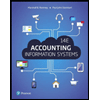 Accounting Information Systems (14th Edition)BusinessISBN:9780134474021Author:Marshall B. Romney, Paul J. SteinbartPublisher:PEARSON
Accounting Information Systems (14th Edition)BusinessISBN:9780134474021Author:Marshall B. Romney, Paul J. SteinbartPublisher:PEARSON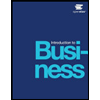
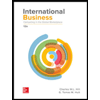 International Business: Competing in the Global M...BusinessISBN:9781259929441Author:Charles W. L. Hill Dr, G. Tomas M. HultPublisher:McGraw-Hill Education
International Business: Competing in the Global M...BusinessISBN:9781259929441Author:Charles W. L. Hill Dr, G. Tomas M. HultPublisher:McGraw-Hill Education